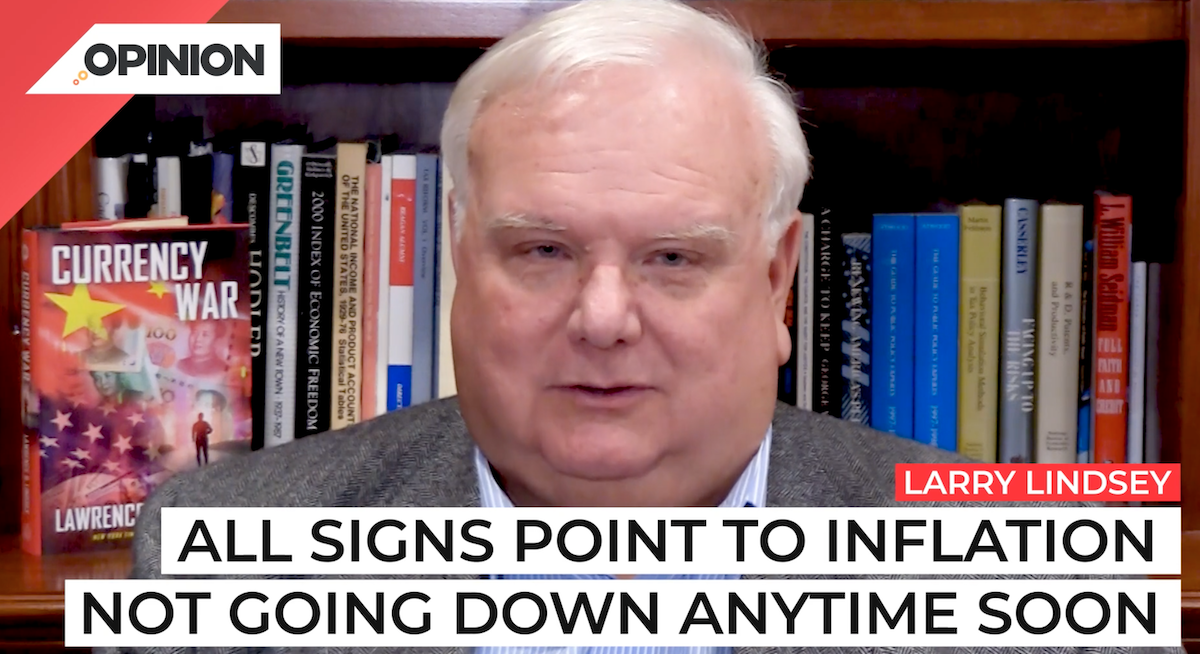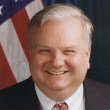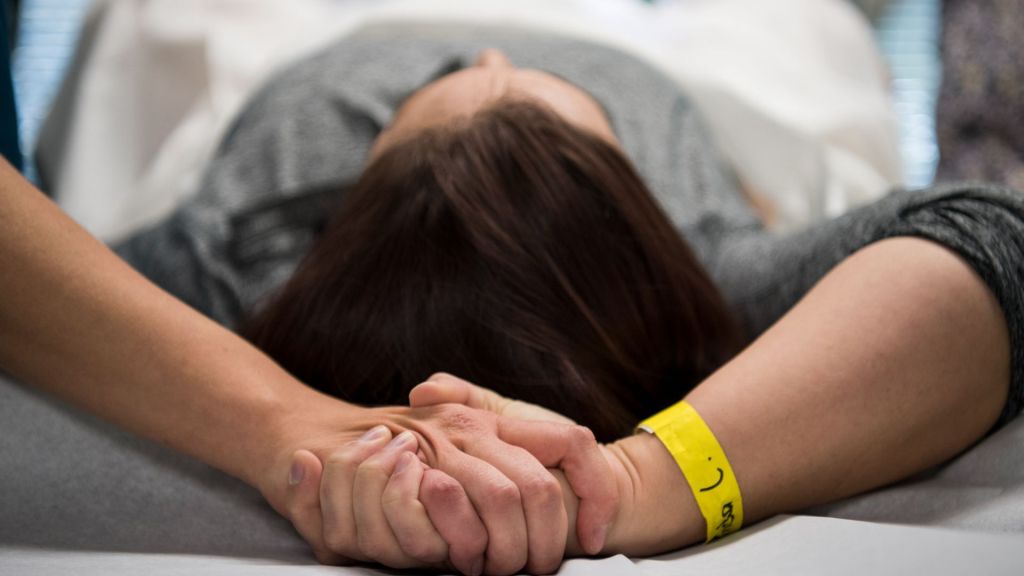
Commentary
-
Our commentary partners will help you reach your own conclusions on complex topics.
The Labor Department released a shocking number.
Consumer prices rose nine tenths of a percent just in the month of October. That’s one of the highest readings in decades. This wasn’t supposed to be that way. If you listen to the so-called experts, they said that inflation was supposed to be over by now. The federal reserve, for example, forecast that the whole year’s inflation would be 1.8% when they met last December. And even this March, they said it was only going to be 2.4%. Um, so far this year it’s been running at a 7% annual rate, roughly three times the Fed’s forecast, but that didn’t stop them from forecasting declines in inflation. Next year, they said that inflation would drop to 2%, both in 2022 and 2023. And it wasn’t just the federal reserve. One of the largest money managers in the country, PIMCO put out a piece in April…titled, “dealing with the inflation headfake”… meaning it’s going to go away.
It was false. And just recently, Treasury secretary Yellin said that inflation should normalize by the end of 2022 second half. Well, what does normalize mean? Is it going to be less than the current inflation pace of 7% and that wouldn’t be very normal?
Or how about the 5% pace that we’ve seen in just the last three months? Or how about the official target rate of having just 2% inflation?
I think Yellen was probably thinking about 2% but said normalize because she didn’t want to commit to that. The fact is that we are having the beginnings of a wage price spiral. I would bet that inflation next year would be roughly as high as it was this year. Maybe even a little bit higher. And I don’t see a lot of end in sight in 2023. The main reason is that workers have been falling behind. Wages have only been rising at a 4.3% rate this year, where prices went up seven 7%.
That means that workers have been falling behind. They are literally running 2.7% poorer after inflation than they were last December. Well, you know, what would anyone do under those circumstances?
They’d want to catch up after all, the labor market is very tight. If you go to your boss and say, “I’m going to quit, unless you give me a better raise,” odds are right now, you’ll get the raise. So wages will go up more, but that’s going to simply put more pressure on costs. And when costs go up, firms try and pass on those higher costs to consumers in the form of higher prices.
This is the beginnings of a wage price spiral. It’s very similar to what happened in the 1970s. They’re very, very hard things to end. Virtually every year where inflation has been this high. As of October, it finished the year, even higher than it had been in October and the following year was higher as well.
So the odds based on history are quite high that 2022 at least is going to be higher than 7% in terms of inflation. In fact, the only reason to bring inflation down, excuse me, to have it come down is the federal reserve hikes interest rates dramatically. They’re not going to do that.
2022 is an election year. Maybe they’ll add half a point maybe to their overnight interest rate by the end of the year, but that would still keep the cost of overnight money under 1%.
Who wouldn’t borrow to buy something when that something is going up at 7% and the cost of borrowing for it is based on a number like 1%?
No inflation is not coming down, but there’s a subtle reason why the fed and even the government might not want it to come down very much. We just ran up an enormous amount of debt during the COVID experience.
Whereas our debt used to be perhaps 75 or 80% of GDP, it’s now up to 125% of GDP. GDP is the size of the economy that could become crippling.
If interest rates go up, remember Uncle Sam is the biggest borrower in the country by far. So it doesn’t want to pay more for what it borrows…but it gets better for the government right now. The cost of government borrowing is way below the inflation rates. So what happens if that continues? Well, if inflation continues at 7%, the cost of paying back a thousand dollar bond in, 2030 is only going to be 500 in terms of dollars of the day, the purchasing power of the day. So the person will be getting his or her money back thousand dollars, but it’ll only buy $500.
That makes it much easier on the government to return the money. So I will bet that we’re likely to have higher inflation for quite some time. And we’re not going to see the fed catch up to the inflation with regard to interest rates. Last week’s bad numbers were just a sign of what’s ahead.
-
Election 2024 will boil down to the Great Lakes states
Pollsters and pundits have been engaged in a long debate about how Biden or Trump might win the 2024 election, with much of their focus spent on the “swing state” electoral battlegrounds. While the winners of Alabama or California may be obvious, for instance, who wins Pennsylvania is a more difficult question. Watch the above… -
Why the Fed should consider Theory of Reflexivity when fixing policy
The Theory of Reflexivity, often used in the context of economics and financial markets, implies that investors don’t base their decisions on reality but on their perceptions of reality. This creates a feedback loop where investors’ perceptions influence economic fundamentals, which in turn alter investor perceptions. Watch the above video as Straight Arrow News contributor… -
Federal Reserve surpassed its own wildest expectations
On May 14, the U.S. Bureau of Labor Statistics released the most current producer price index (PPI) report, which showed an increase of 0.5% month-over-month in April. After the report’s release, U.S. Federal Reserve chairman Jerome “Jay” Powell said that while he believes the current policy rate is restrictive by many measures, the Fed needs… -
Polls give slight advantage to Trump in Electoral College
With the U.S. general election only six months away, leading candidates President Joe Biden and former President Donald Trump appear to be engaged in a very close contest. In their 2020 race, the winner of the Electoral College was ultimately determined by a relative handful of voters in just a few swing states, even though… -
College sports is big money but not everyone benefits
March Madness has wrapped up and Caitlin Clark has emerged as a household name as well as a wealthy student athlete. Earning over $3 million throughout her college career, her success stands in stark contrast to the previous notion that collegiate athletes shouldn’t earn anything beyond their scholarship. Straight Arrow News contributor Larry Lindsey examines…
Latest Opinions
-
 Getty Images
Getty Images
Andrew Cuomo announces NYC Mayor candidacy
-
 Getty Images
Getty Images
US troops bolster border security to curb illegal crossings
-
 Getty Images
Getty Images
Zelenskyy meets with British prime minster following tense Trump meeting
-
 Getty Images
Getty Images
Trump admin. asks federal workers to detail weekly accomplishments, again
-
 Getty Images
Getty Images
Military members with gender dysphoria to be processed for separation: DOD
Popular Opinions
-
In addition to the facts, we believe it’s vital to hear perspectives from all sides of the political spectrum.






